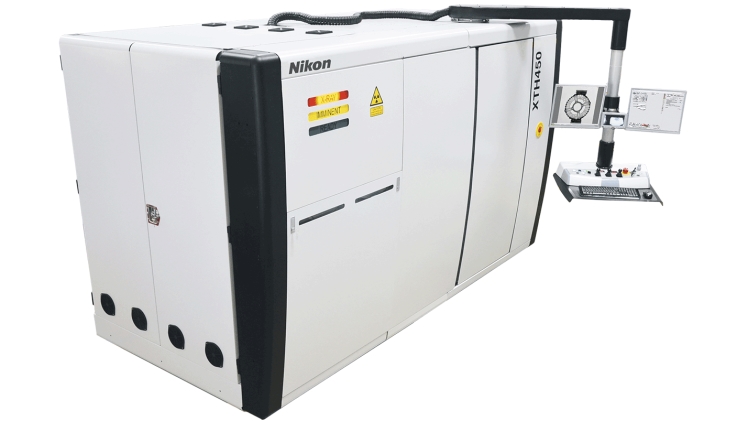Introduction
Have you ever had a material that you wondered if a piece of industrial X-ray equipment can inspect its quality? The choice of a quality inspection method or tool greatly depends on certain factors, which include the manufacturers’ overall objective for inspection. However, some manufacturers have had to stick to destructive testing methods because they are unsure if a non-destructive testing method like industrial X-ray equipment can accurately assess their product quality.
This article outlines some popular industrial products and materials used in several industries that can be accurately inspected for defects using industrial X-ray machines.
So, without further ado, let’s dive in.
I. What can you Inspect with Industrial X-ray Equipment?
Here are some products that fall under the purview of accurate non-destructive inspection using industrial x-ray equipment.
1. Electronic components
Traditional methods like visual inspection, thermal imaging, and optical inspection techniques have become ineffective at identifying defects in modern electronic assembly. The reason is because of the decreasing size and complex placements of the components on the circuit boards.
click here for more : bestmagzine90
Nonetheless, industrial X-ray equipment offers an accurate inspection method as X-rays can penetrate hidden features to produce detailed images that are difficult for these other methods.
2. Castings
Defects like cracks and holes are common defects that manufacturers often battle when manufacturing cast components or products. Sadly, manufacturers use destructive methods to ascertain the presence of defects in these components, which is quite expensive as it leads to the destruction of the test samples.
Fortunately, industrial X-ray machines can identify these defects accurately, including Gas porosity, micro-shrinkage, dross, diffraction mottling, and diffused chaplets. What’s more, is that it is a non-destructive inspection method.
3. Fine ceramic parts
Ceramics are brittle materials, which means that they break easily, making the case of fine ceramic parts a unique one. The reason is that its resistance to breakage is significantly reduced. Therefore, manufacturers tend to look for sensitive inspection tools to find defects in this material.
click here for more : bestweb345
When coupled with computed tomography, one perfect solution is the industrial X-ray machine. It produces images that can help identify defects in dimensions, voids, inclusions, and density variations.
4. Pipe weld
X-ray is a fitting method for weld inspections since technicians don’t have to modify or destroy the object to fully analyze it. More importantly, industrial X-ray machines are useful for pipe welds when there is no access to all the sides of the pipe, for instance, when the pipes are buried. Moreover, X-ray is also an adaptable approach used on most materials, making it versatile.
5. Tire and wheels
X-ray tire and wheel inspection is a method that is applied not only for the finishing check of a brand-new tire but also for the internal structures of refurbished tires. Manufacturers of tires for trucks, earthmovers, and aircraft often check the tread for unusual wear patterns, cuts, or embedded nails and the sidewalls for cracks, cuts, abrasions, or bulges.
6. Graphite composite parts
Due to their lightweight, graphite composite structures have been used in various industries to create very durable but light materials. However, defects like cracks have an adverse effect on material integrity.
Industrial X-ray equipment helps to detect these defects with high accuracy despite their dual-material composition since most composite parts are a combination of two materials with fundamentally different densities.
7. Battery
With industrial X-ray machines and computed tomography, the core electrode arrangement can be inspected for defects after assembly. X-ray assessment helps identify the cathode and anode layout and precisely measure internal linear spaces and alignments.
Additionally, it helps to ascertain short circuits’ quality, misaligned components, and electrical contacts with more efficiency, better defects’ visibility, and deeper insights during result analysis.
II. How to Tell the High-Quality X-ray Film?
Usually, the quality of X-ray films determines the accuracy of an X-ray inspection exercise since the image quality enables the inspector to easily identify defects. However, telling a high-quality film from a low-quality one can sometimes be confusing. Here are some factors that can help you determine a high-quality film.
1. Superior image quality
The image quality of an X-ray film must be superior to pass for a high-quality film. The reason is that the clarity of this image, even after magnification, determines the accuracy of the results. Hence, factors like magnification, resolution, and contrast need to enhance the image without losing any detail during the image production.
2. Dependable consistency
The image quality needs to be consistent for different use cases to qualify as a high-quality film. So, regardless of the size, weight, material, and geometry of the test samples, the quality of the image should be top-notch. Similarly, defects like cracks, discontinuities, porosity, and delamination should be identified easily despite changes in these factors.
3. Even density
X-ray inspection results are based on the densities of the test samples under examination, and the denser the material, the darker they appear on the image as fewer X-rays get to the detector. Therefore, to get an accurate result, a high-quality X-ray film should present even densities of the image to enhance the analysis of the image and increase result accuracy.
Conclusion
So, what do all these add up to? It all adds to the fact that various products and components made of different materials, sizes, and shapes can get accurate quality inspection using X-rays. Also, you can identify defects like cracks, inclusion, and porosity with a piece of industrial X-ray equipment.
However, the quality of your X-ray image needs to be high-quality to enhance the analysis of test results with high result accuracy. But then critical factors like even density, image quality, and consistency determine the quality of the film used in generating the image. Hence these factors should be carefully considered when choosing a film for the X-ray equipment.
Read More About: ifuntv

